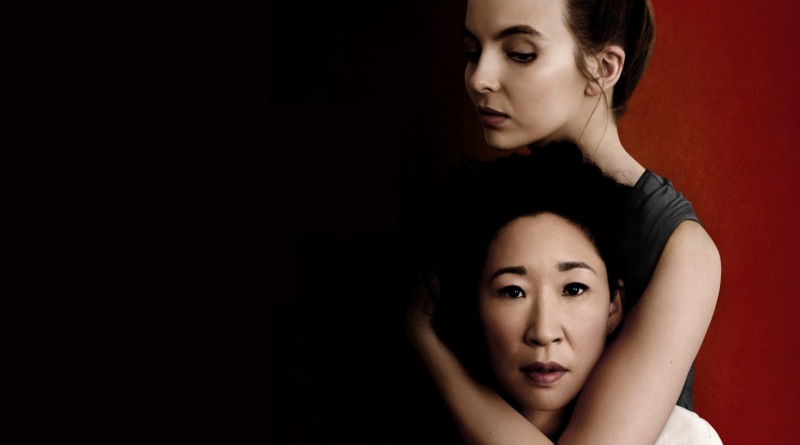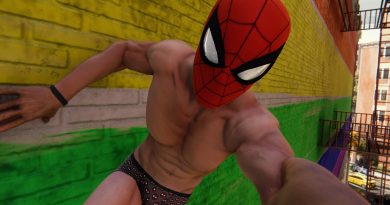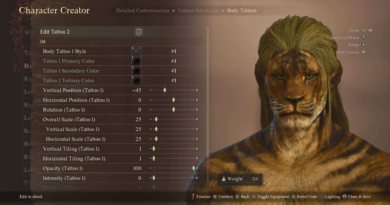What Killing Eve Can Teach Video Games About Writing Complex Queer Characters

Obsession and violence are not new words in the video game lexicon. They may as well be tenets―shooting, killing, maiming, stalking, lurking, watching. These gameplay vertebrae are the backbone of games spanning every genre, from Grand Theft Auto to Watch Dogs, Yakuza to The Walking Dead. From these two principal ideas, practically every gameplay convention emerges: stealth and stabbing, bows and arrows, and fetch quests. With this in mind, it should be shocking that the BBC’s Killing Eve reminds me of no video game I have ever played.
For the unfortunately unacquainted, Killing Eve is a masterpiece of cat-and-mouse, morally grey television. It centers around the eccentric dynamic of Eve and Villanelle, a government detective and an international assassin, respectively, who find themselves utterly obsessed with finding, understanding, and consuming the other.
Of course, there are certainly elements of the show that have their video game counterparts. Morally questionable detective? Disco Elysium has you covered. Women, who kill unabashedly? Hi, Bayonetta. How are you? And, quite obviously―how about two women in love? Well, the choices thin out there, but Dragon Age, Mass Effect, and Life is Strange do cover some of the bases.
Yet a great gulf still exists between the delicious specificity of Killing Eve and the relatively new world of queer female representation in video games. To me, the show exemplifies what is missing from the mainstream narrative of queerness in games; the unabashedly female perspective, the asynchronous orchestra of love, hatred, and lust that make up the show’s core relationship. The show revels in nuance, and frolics freely between sweet and loving, as well as violent and twisted.
As much as I would love a believable Killing Eve mod for Skyrim, or a too-accurate depiction in The Sims, we are reaching a precipice of queer representation in games where queer narrative should no longer be padlocked behind a mod or DLC. What I want, what I dare to imagine, is a world of video games where flawed women, flawed queer women, are the centerpiece, their lives, jobs, and romantic desires the hero’s journey, not a side quest, not a companion.

And oh, companions. Companion-hood might as well be the ultimate bane and boon of queer representation in games. A large majority of gaming’s best queer characters are player companions, characters like Liara T’Soni of Mass Effect, or Dragon Age: Inquisition’s Dorian Pavus. The memory of Dorian’s introduction to the Dragon Age series will forever sit vividly in my memory, and mostly for frustrating reasons. His introduction (as well as the prominent introduction of Krem, a trans man also featured in Inquisiton) solidified a new wave of thinking about queer representation in games, succinctly summarized by the (at the time) very popular mantra “you should write great characters who happen to be gay.”
This omits the phrase’s natural foil, of course, which would be writing gay characters who are deliberately gay―gay from the get-go, gay in the way that informs who they are, informs the way they dress, their self-confidence, or the way they relate to others, their parents, their friends.
This “happen to be gay” syndrome has been and continues to be widely pervasive. While well-meaning, it usually results in the writing of a character whose sexuality is reduced to an (optional) coming out arc or an (optional, player-triggered) love scene. By following this pattern of game design, the game lets the player choose the level of queerness they experience in the same way a game may offer a difficulty slider. Overwatch’s poster child, Tracer, is both an example of progress and failure in this vein. You could play Overwatch for 2000 hours and still have no idea Tracer is a lesbian. I sure did. While this is partially the fault of the limited
range of expression of lore and backstory allowed by Overwatch’s gameplay, it is evidently a continuation of a larger, longer trend. As the old adage goes―if I call a character a lesbian and nobody is around to hear it, is she still a lesbian?
Some gamers may ask, why do I need to know? In a world of happen-to-be gays, isn’t it better that we simply stumble upon their sexuality, just as we might stumble upon a character’s affection for rock collecting, or bird watching? What is missing from this discussion is that in order to stumble upon something, it must be present; the writers must be willing to write it, to design it, to make it a part of the living reality of the character and the world that surrounds them.
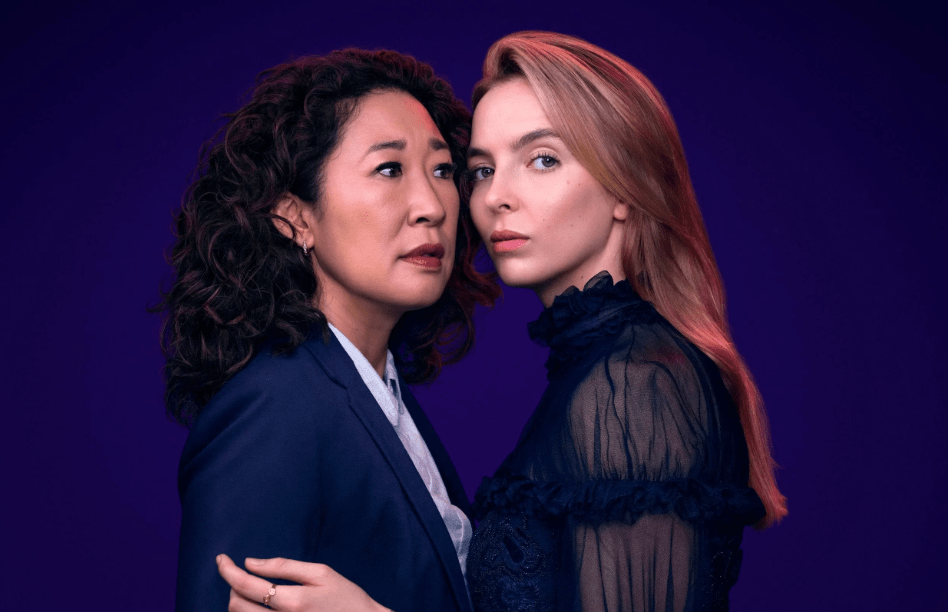
In Killing Eve, neither character has ever uttered the words “I’m gay,” or, perhaps more fittingly, “I would like to kiss and or kill another woman” yet every review of the show in some way refers to it as a twisted love story. What could have possibly tipped them off? It could be Villanelle’s presents to Eve―a blade hidden in lipstick, or an exquisite evening gown. It could be the way Villanelle carries herself, the easy androgyny of her many disguises. Maybe it was the postcards she sent, or the menagerie of flowers spelling out Eve’s name left menacingly on her doorstep. As your English teacher may have drilled into your very membrane, “show, don’t tell.” Media need not label characters when it invests in them; queerness can be evident in a hundred different ways other than a coming out arc.
While the majority of lesbian and bisexual characters in AAA titles occupy either side character roles or exist simply as a romance-driven option for the player character, there do exist some games of mainstream success that deliberately center queer women, games that make lesbianism or bisexuality a core but not one-dimensional part of the protagonist’s identity. The first game that comes to mind is Gone Home, the 2013 earth-shattering “walking simulator” that dared to be about one theme in singularity: being gay, and the consequences of that reality.
Unfortunately, mentioning Gone Home in 2020 feels less like a win than it should. To its credit, it was undoubtedly successful in telling a queer story in definitive terms. The protagonist’s love for her girlfriend felt real and relatable. Her grief was impactful, harrowing. For the first time ever, I felt like a game genuinely captured the deep and unsettling fear and confusion that come with being gay in 2013 America.
Yet the reason mentioning Gone Home now feels silly is the exact same reason that it once felt revolutionary. In a world that has made great gains towards LGBT acceptance, why is one of the only detailed depictions of lesbian identity in mainstream videogames a tragedy? Even in greatly
lauded spiritual successors like Dontnod’s Life is Strange, we observe a very similar narrative being told about queerness: it starts with being sad, it ends with being sad. Why must tragedy and queerness be paired so intimately, even in worlds of fiction and limitless fantasy?
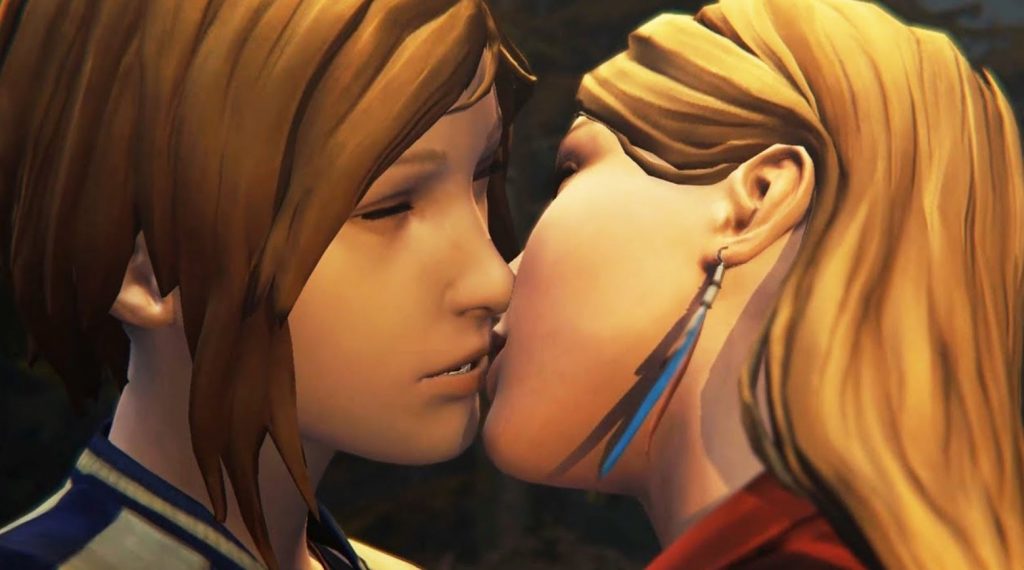
I’m not suggesting that good queer representation means always having happy endings. Killing Eve is both a tragedy and a comedy. But neither of those elements are born of the fact that it is also a queer love story. It is a tragedy because it is about trauma and violence and murder, about looking for love and losing it. It is a comedy because it’s about a maniacal assassin who is as good at cracking jokes as she is at stabbing eyes with weaponized hairpins. It also just “happens to be” relentlessly gay.
Mainstream video games have so far had little luck striking the same match. As Patricia Hernandez aptly noted in 2014, “everything about Gone Home makes you wonder how the game can exist in a market that doesn’t seem to value the same things as it does.” I’d say this line might have been prophetic. Few games like Gone Home have emerged in the respect of centering queer, female perspectives and telling narratives from that perspective. In many ways, it was an aberration from the “happen to be gay” campaign that exploded in the wake of Dragon Age: Inquisition and in sequels to Mass Effect.
Of course, there is always light in the darkness―the indie game development scene specifically has long been charting the course for complex queer characters in games. Games like If Found are finding mainstream success while simultaneously centering unique and intersectional queer narratives. In addition, Naughty Dog’s Last of Us II brings back Ellie, another celebrated queer character. These occurrences of the multi-dimensional queer narratives are becoming less and less rare, undoubtedly a result of wider audience acceptance. More significantly, though, these changes are happening due to the elevation of queer voices: staffing writers rooms with diverse queer writers, distributing accessible game-making tools, and democratizing the game-making process.
As games centering the queer experience grow to become part of the norm, not the aberration, I dream that the characters depicted in these new narratives continue to grow more flawed, more nuanced, more weird and wild. In the desert of video game representation, it is easy to fall prey
to waiting for role models―queer game protagonists that do the right thing, that set the right example, good guys that just “happen to be gay.” Shows like Killing Eve force us to realize that our appetite for diverse queer narratives should not stop there.

